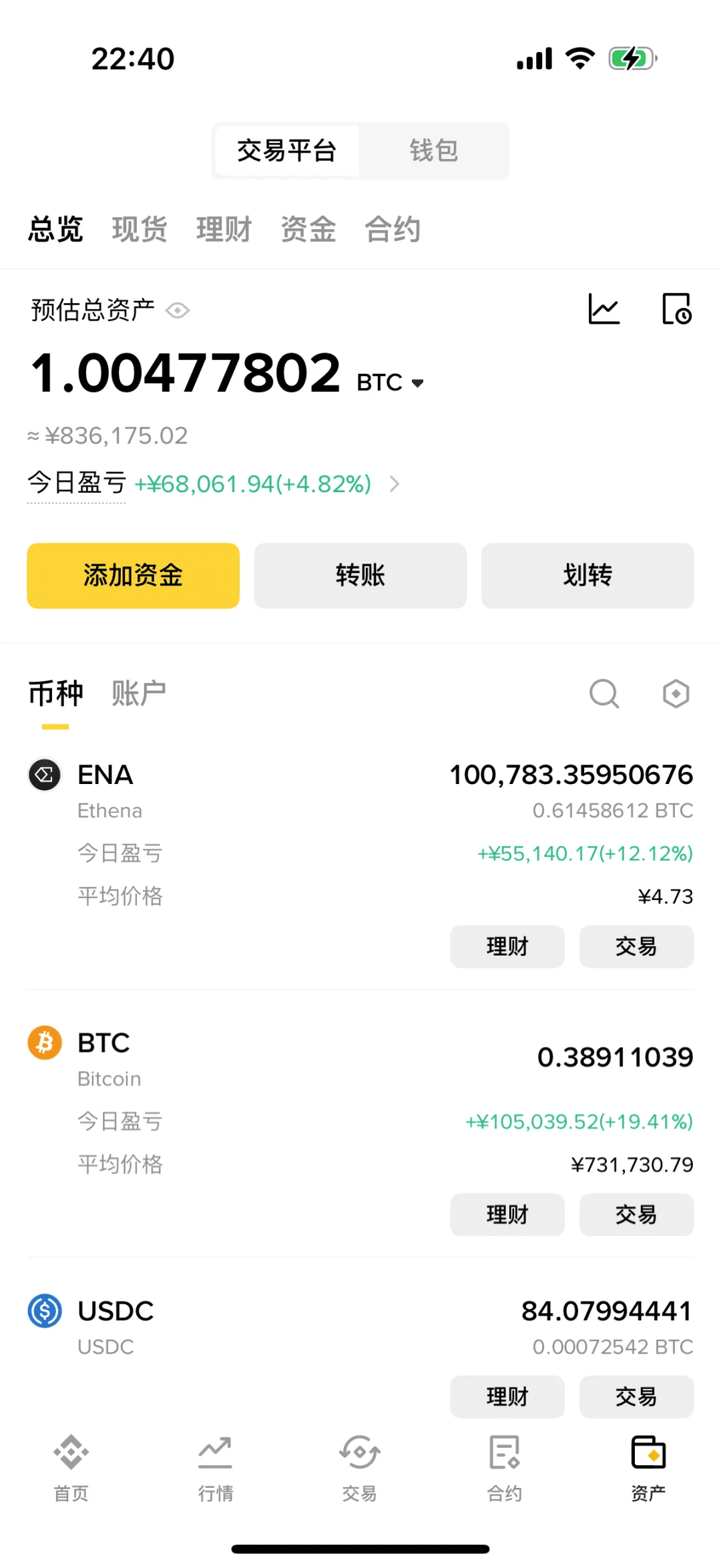I didn't rush her to recover her losses; I just told her to close the app and take three minutes to breathe, saving six sentences in her notes. I didn't expect that 52 days later, the account numbers she shared had six zeros added! Today, I’ll explain this 'reverse survival method'; if newcomers follow it, they can at least avoid 90% of the detours.
First, be an observer before becoming a player: No matter how hot a new coin is, don’t rush in.
The most common mistake newcomers make: seeing a new coin rise sharply and then following the crowd to go all in. My cousin initially heard in the group that 'this coin can multiply a hundred times', and invested 200,000 U at once, only to see it drop to a fraction. Remember, no matter how hot a new coin is, wait for three conditions to align before investing.
Price fluctuating in a range for 3 days: For instance, if the price oscillates between 1-1.2U without breaking above or below, it indicates a temporary balance between buyers and sellers.
5-day moving average turning upwards: If the moving average shifts from downward to upward, it indicates a short-term trend is beginning to improve;
Trading volume increased by 50%: For instance, if the previous daily volume was 10 million U, and now it’s 15 million U, it indicates genuine funds are entering the market.
Newcomer operation template: if you lack any one item, use a maximum of 5% of your funds to test (for example, with 9000U, only invest 450U); if all three are not in place, just sit back and watch, don’t act impulsively — the market is not short of opportunities; what it lacks is patient restraint.
Second, sideways markets are not graveyards; they are places to add positions: only use profits, don’t touch your principal.
When my cousin’s losses reached 9000U, she encountered a coin that was sideways, while the group was full of 'cut losses and exit' voices, with over 500 calls to 'cut' in a single day. She remembered the 'averaging down in sideways markets' method I told her about, used the previous profit of 2000U to average down, and didn’t touch the remaining 7000U principal. Later, when the coin price rebounded, she managed to recover a large portion of her previous losses.
Here’s something to remember: Only use profits for averaging down; your principal is your strength. For example, if you enter with 1000U and earn 200U, only use that 200U to average down; if you incur losses, never use your principal to cover — if you lose your principal, you’ll have no chance to recover.
Third, during crashes, reveal your cards first; during surges, lock the doors and windows: don’t be swayed by emotions.
Newcomers panic during crashes and become greedy during surges; my cousin was the same. Later, she followed these two rules and incurred much smaller losses.
Don’t panic during crashes; first, check two signals: one is whether previous lows were broken (for example, if the previous support was 1U and hasn’t broken, you don’t need to sell); the second is whether the fear index is high (consider reducing positions only if it exceeds 60). If previous lows are unbroken and the fear index is low, just lie down and don’t act rashly.
Lock in 30% of profits on a surge: For example, if the coin price rises, sell 30% to secure profits (for instance, with a capital of 1000U earning 500U, sell 150U first), and set a trailing stop for the rest (for example, if you gain 400U, set a stop-loss at the point of gaining 200U), letting profits run without fixating on 'how much more can it rise'.
Fourth, buy on red faces, sell on green faces: a straightforward buying and selling signal.
Newcomers might not understand complex indicators; just remember these eight words: buy on bearish candles, sell on bullish candles.
Buying on bearish candles: Look for long-bodied candles (with a decline of 3%-5%) that don’t break previous lows and have increased volume, for example, if the price drops to 1U but doesn’t break the previous low of 0.95U, and the trading volume is higher than before, buying at this point is safer than chasing after a rise.
Selling on bullish candles: If a bullish candle rises over 5%, sell half first, and set a stop-loss for the remaining (for example, if the purchase price is 1U and it rises to 1.05U, sell half and set the stop-loss at 1.02U). Don’t stay up late wondering 'can it rise a bit more', as it strains your eyes and increases the risk of loss.
Five, always leave some breathing room: don’t stake your entire principal.
My cousin previously suffered huge losses because she went all in. Later, she strictly followed this rule: never exceed 20% of total funds in a single asset (for instance, with 9000U, invest a maximum of 1800U in one coin), and keep a maximum of 70% in total positions (at most 6300U from 9000U) while leaving 30% cash as backup.
Remember: Full positions are for gamblers; leaving room is for skilled players. The crypto market always has black swans, like sudden crashes or platform issues. Keeping 30% cash means even if you incur losses, you can still recover, unlike my cousin who once had to 'liquidate her store'.
Six, write a 'confession' every day: If you lose, don’t wipe your tears; summarize instead.
Newcomers get sad when they incur losses, forgetting to find the reasons. My cousin later wrote three sentences every night before sleeping.
Did this purchase follow the crowd? (For example, did you buy just because someone in the group said 'it will rise');
Are you procrastinating on stop-losses? (For example, when you should cut losses, you don’t, turning small losses into larger ones);
Did you use your principal to average down? (For example, did you use your principal to cover losses, leading to greater losses?).
Finish writing and sleep; don’t challenge the market — the market won’t rise just because you’re upset; it will only respond to your lessons learned to reduce losses next time.
Finally, a heartfelt message to newcomers: The crypto market is not a casino. My cousin lost from 200,000 U to 9,000 U and then relied on these six rules to recover; it was not luck, but following the rules. You don’t need to chase 'quick profits' now; first, learn 'not to lose big money' — not losing already means you’ve outperformed 80% of newcomers.
Follow these six rules for a month, and you’ll realize: making money in the crypto market doesn’t require gambling. Follow me for a template of the 'trading confession' my cousin used, and let’s collectively avoid pitfalls and protect our principal!




